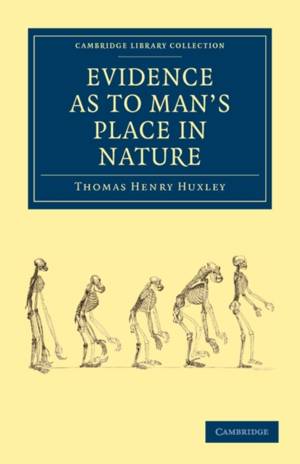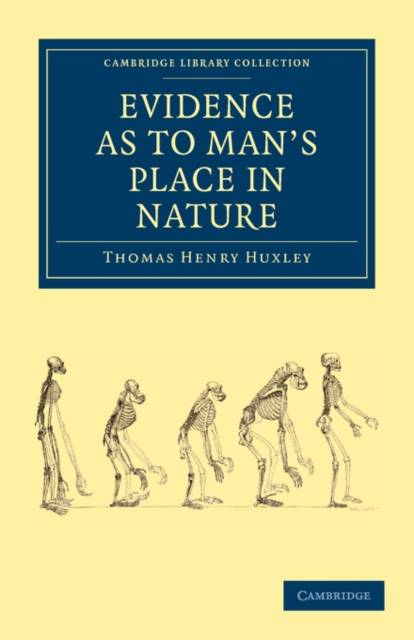
Door een staking bij bpost kan je online bestelling op dit moment iets langer onderweg zijn dan voorzien. Dringend iets nodig? Onze winkels ontvangen jou met open armen!
- Afhalen na 1 uur in een winkel met voorraad
- Gratis thuislevering in België vanaf € 30
- Ruim aanbod met 7 miljoen producten
Door een staking bij bpost kan je online bestelling op dit moment iets langer onderweg zijn dan voorzien. Dringend iets nodig? Onze winkels ontvangen jou met open armen!
- Afhalen na 1 uur in een winkel met voorraad
- Gratis thuislevering in België vanaf € 30
- Ruim aanbod met 7 miljoen producten
Zoeken
Omschrijving
In 1863, the biologist and educator Thomas Henry Huxley published Evidence as to Man's Place in Nature, a compilation of his public lectures on Darwin's theory of evolution -- specifically the controversial idea of the ape ancestry of humans. An energetic supporter of Darwin, Huxley's argues that in order to understand the universe, everyone must know their place in the natural world. The book is divided into three parts, each written with the aim of persuading lay audiences. The first covers earlier human beliefs about exotic animals, especially 'man-like' apes. In Part 2, Huxley suggests that every animal on Earth is related in that all go through developmental stages from an egg, whether the animal is 'a silkworm or a school-boy'. Part 3 involves a discussion of recently discovered Neanderthal bones and compares prehistoric craniums to modern human skulls.
Specificaties
Betrokkenen
- Auteur(s):
- Uitgeverij:
Inhoud
- Aantal bladzijden:
- 172
- Taal:
- Engels
- Reeks:
Eigenschappen
- Productcode (EAN):
- 9781108004572
- Verschijningsdatum:
- 24/09/2009
- Uitvoering:
- Paperback
- Formaat:
- Trade paperback (VS)
- Afmetingen:
- 140 mm x 216 mm
- Gewicht:
- 226 g

Alleen bij Standaard Boekhandel
+ 53 punten op je klantenkaart van Standaard Boekhandel
Beoordelingen
We publiceren alleen reviews die voldoen aan de voorwaarden voor reviews. Bekijk onze voorwaarden voor reviews.











